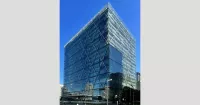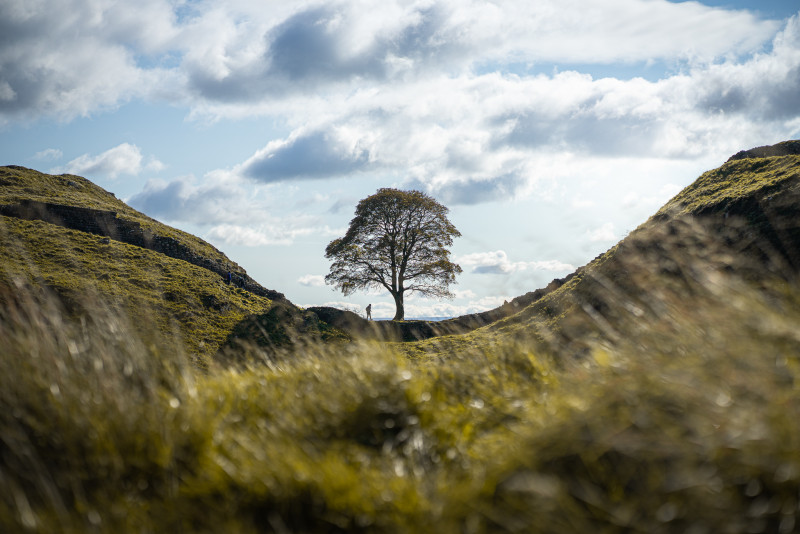1769
During the Spanish Empire expansion throughout the world, specifically in 1769, the Franciscan Junípero Serra received orders from Spain to bring the Catholic faith to the natives of Alta California; the idea was to unify the empire under the same religion and language. Mission San Diego de Alcalá was the first Spanish mission founded in Alta California that same year.
September 07, 1769
On September 7, 1769, an expedition led by Gaspar de Portolá entered the San Luis Obispo area from coastal areas around today's Pismo Beach. One of the expedition's three diarists, padre Juan Crespí, recorded the name given to this area by the soldiers as Cañada de Los Osos ("cañada" translates as "valley" or "canyon," and Osos translates to "bears"). The party traveled north along San Luis Obispo Creek, turned west through Los Osos Valley, and reached Morro Bay on September 9.
1770
In 1770, Portola established the Presidio of Monterey and Junípero Serra founded the second mission, Mission San Carlos Borromeo de Carmelo in Monterey. The mission was moved to Carmel-by-the-Sea in the following year.
1772
In 1772, as the people of Presidio of Monterey and Mission San Carlos Borromeo de Carmelo faced starvation owing to a lack of supplies, Commander Pedro Fages, a member of the Portolá expedition, led a hunting expedition to la Cañada de los Osos ("Bears Canyon") to bring back food. Over twenty-five mule loads of dried bear meat and seed were sent north to relieve the missionaries, soldiers, and neophytes (baptized natives). After this, Junípero Serra decided that la Cañada de los Osos would be an ideal place for the fifth mission.
1772
San Luis Obispo was founded by the Spanish in 1772, when Saint Junípero Serra established Mission San Luis Obispo de Tolosa. The town grew steadily through the Mexican period before a rapid expansion of San Luis Obispo following the American Conquest of California. San Luis Obispo is a popular tourist destination, known for its historic architecture, vineyards, and hospitality, as well as for being home to California Polytechnic State University, San Luis Obispo.
September 01, 1772
The area had abundant food and water supplies, the climate was also very mild, and the local Chumash were very friendly. With soldiers, muleteers, and pack animals carrying mission supplies, Junípero Serra set out from Carmel to reach the Valley of the Bears. On September 1, 1772, Junípero Serra celebrated the first Mass with a cross erected near San Luis Creek. The next day, he departed for San Diego, leaving Fr. José Cavaller with the difficult task of building the mission. Fr. José Cavaller, five soldiers and two neophytes began building the Mission San Luis Obispo de Tolosa, which would later become the town of San Luis Obispo. Both the mission and town were named after Louis, bishop of Toulouse, France, known in Spanish as "Luis, obispo de Tolosa".
1810
When the Mexican War of Independence from Spain broke out in 1810, all California missions had to become virtually self-sufficient, receiving few funds or supplies from Spanish sources. Beginning soon after Mexico won her independence from Spain in 1821, anti-Spanish feelings led to calls for expulsion of the Spanish Franciscans and secularization of the missions. Because the fledgling Mexican government had many more important problems to deal with than far-off California, actual secularization did not happen until the mid-1830s.
1851
The ranchos remained focused on cattle after the conquest of California. With the discovery of gold, the county experienced a major economic surge with the rising price of beef, with the highest prices coming in 1851. The county remained focused on cattle until 1863, when a drought left most ranchos devastated. Residents quickly turned to other venues, leading to the breaking up of many of the ranchos and a major change in the economic climate of the town, which focused less on cattle ranching and more on dairies, agriculture, and mined goods from then onward.
May 1858
Following the American Conquest of California, San Luis Obispo was the first town incorporated in the newly formed San Luis Obispo County. It remains the center of the county to the present. Early in the American period, the region was well known for lawlessness. It gained a reputation as "Barrio del Tigre" (or Tiger-Town) because of the endemic problem. Robberies and murders that left no witnesses were carried out on along the El Camino Real and elsewhere around San Luis Obispo for several years. Finally a gang of eight men committed a robbery with three murders and a kidnapping at the Rancho San Juan Capistrano del Camote in May 1858, that uncharacteristically left two witnesses alive. This brought about the formation of a vigilance committee in the County that killed one, the suspected leader of the gang Pio Linares, and lynched six others, a total of seven men suspected of such misdeeds (the most lethal in California history). Members of the committee remained influential members of the community for decades.
1870
San Luis Obispo experiences a warm Mediterranean climate (Köppen climate classification Csb). On average it has 50 days with measurable rain per year, mostly during winter months. Summers are generally warm and sunny, often with morning fog from the Pacific coast. Winters are generally mild, though below freezing lows occur 2.6 nights per year on average. Measurable snowfall in San Luis Obispo has not officially been recorded since records began in 1870, although photos show about 0.3 inches (0.76 cm) fell in 1922 and snow flurries were reported in both 1988 and 2006. Temperatures do, however, vary widely at any time of the year, with 80 °F (27 °C) readings in January and February not uncommon.
1872
The fire department of San Luis Obispo was first organized in 1872 and now has 45 full-time firefighters and four fire stations (as of 2007 ). The SLO City Fire Stations are staffed with three-man ALS engine companies and a four-man ALS Truck company. Each apparatus has at least one paramedic on duty each day. The department responds to over 4,500 calls each year. The San Luis Obispo City Fire Department also maintains a bike medic program which is used at the Farmers' Market and other special events throughout the city. Four members of the Fire Department are also on the San Luis Obispo SWAT Team as SWAT Medics and respond using Squad 1 (an ALS equipped ambulance which also carries some light rescue gear and other specialty tools) The front-line members of the department are represented by the San Luis Obispo City Firefighters' IAFF Local 3523.
December 11, 1932
Although heat extremes above 110 °F (43.3 °C) have been recorded, the maritime moderation is generally strong due to the proximity to the cool ocean waters. The hottest temperature on record is officially at 113 °F (45 °C) on September 6, 2020, although a 120 reading was reported in the local news. Nights remain cool year round due to cold-current ocean air in summer and being in a valley subject to inversion, although seldom cold. The warmest night recorded was 75 °F (24 °C) on September 22, 1939, and the coldest day at 40 °F (4 °C) on December 11, 1932.
1945
Cal Poly's open house, Poly Royal, was held annually from 1933 to 1990, though canceled in 1945 due to war rationing. It began as a show-and-tell for students to display their projects. It traces its origins to the 1904 Farmer's Institute and Picnic Basket. By the 1980s, as the college became "the most popular...university in the 19-campus CSU system", Poly Royal began drawing over 100,000 people from throughout the state, including 126,000 people in 1985. Concerts, parties, and other entertainment were added and it earned $3–4 million in revenue for the city every year.
1958
The Madonna Inn is an eccentric landmark established by Alex Madonna in 1958. The Fremont Theater, a historic Art Deco theater from the 1940s, once played first-run movies on the huge screen, and now hosts stage performances. Murals adorn the walls of the main theater while neon swirls light the ceiling. The Palm Theatre boasts solar heating and is home to the San Luis Obispo International Film Festival. Since about 1960, people have been sticking chewed gum on the walls of Bubblegum Alley. The doctor's office on the corner of Santa Rosa and Pacific streets is one of very few commercial buildings designed by Frank Lloyd Wright. San Luis also has a Carnegie Library which is now home to the San Luis Obispo County Historical Museum.
1982
In 1982, following public hearings, the city council approved an ordinance forbidding the construction of "drive-through" businesses. In-N-Out Burger opened a restaurant in the nearby town of Atascadero because of the ban. In 2008 the City Council voted 3–2 to keep the ban.
June 1990
In June 1990 City Councilman Jerry Reiss proposed a city ordinance to ban smoking in all indoor public areas. Following a failed effort by R. J. Reynolds Tobacco Company to defeat the ordinance, the City Council voted 4–1 in favor on June 19, 1990, with only Mayor Ron Dunin dissenting. As a result, on August 2, 1990, San Luis Obispo became the first municipality in the world to ban smoking in all public buildings, including bars and restaurants. This statute has been a catalyst worldwide in anti-smoking legislation. In April 2010, San Luis Obispo strengthened its anti-smoking legislation, making smoking in public, excepting for certain conditions, a citable offense beginning on June 20, 2010.
June 2000
Since June 2000, the first Thursday of every month is The Bike Happening (also known as Bike Nite) in San Luis Obispo. People gather at the Mission Plaza with their bikes. The bikers go around on multiple circuits on the main streets of downtown.
2005
One of the largest Mardi Gras parades west of the Mississippi was held in San Luis Obispo, but canceled in 2005 because of difficulties related to crowd control and alcohol consumption.
2007
Bicycling is increasing as a mode of transportation. The Bill Roalman (Morro Street) Bicycle Boulevard, also called the Bill Roalman Greenway, gives priority to bicycle traffic while a special bicycle traffic signal (one of only a handful in the United States) allows bicyclists their own phase in traffic flow. The SLO County Bicycle Coalition offers a free bicycle valet service during the weekly Farmers' Market. In 2007, the city was designated as a Bicycle Friendly Community at the Gold level by the League of American Bicyclists.
March 12, 2009
Greyhound closed its station building in San Luis Obispo on March 12, 2009; it still serves the city via a bus stop on Railroad Avenue. There are also multiple companies that provide shuttle services or black car service to/from the airport.
April 2010
In April 2010, an "unruly gathering" ordinance passed with a vote of 4–1. This ordinance poses a fine of $700 for the hosts of gatherings with more than 20 people on private property that create a substantial disturbance in a significant amount of the neighborhood. Unlawful conduct includes excessive noise; public drunkenness; serving alcohol to minors; fighting; urinating in public; crowds overflowing into yards, sidewalks, or streets; or similar unlawful behaviors.
2016
Pacific Gas and Electric is the largest non-governmental employer in the city. In 2016, they announced the closure of the Diablo Canyon Nuclear Power Plant in 2025, which was expected to cost the local economy 1,500 jobs with an average salary of $157,000, as well as nearly $1 billion annually in economic activity. The plant has been granted an extension of their operating license until 2030. Congressman Salud Carbajal introduced H.R. 5441 to the House of Representatives in order to create Energy Opportunity Zones, which is designed to specifically target areas that have had a nuclear power plant shut down within 10 years (including San Luis Obispo) for federal tax credits for renewable energy generation, including solar, wind, and wave energy.
2017
The San Luis Obispo Museum of Art began in the 1950s when a small group of artists, educators and enthusiasts established the foundation. Over the years, the San Luis Obispo Art Association evolved into the San Luis Obispo Art Center, which evolved into the San Luis Obispo Museum of Art. The museum, with a focus on California Contemporary Art, shows 24 exhibitions per year, has both adult and children's art classes, and hosts art talks, films and other events. The museum launched a $15 million Capital Campaign for a new building in 2017.
2019
Downtown San Luis Obispo has many eclectic shops and boutiques. Takken's Shoes is headquartered in San Luis Obispo. Ernie Ball's Music Man factory is located in San Luis Obispo. Mindbody and iFixit have been headquartered in San Luis Obispo since their inceptions. In 2019, SLO experienced a boom in home construction along with continued building of commercial structures. As housing had not kept up with job growth, many people who cannot afford to live where they work, commute to their jobs in SLO.
2020
San Luis Obispo County Regional Airport offers private air service and non-stop commercial air service to San Francisco, Los Angeles, Seattle, Denver, and Phoenix, Dallas-Fort Worth, Las Vegas, and service to Portland and San Diego, beginning in 2020.
2021
The City of San Luis Obispo Utilities Department can trace its lineage back to 1872 when plans were made to provide the city with safe drinking water. Currently the Utilities Department operates a water treatment plant designed to treat 16 million gallons a day, the Whale Rock Reservoir located in Cayucos, CA, a water distribution system including 15 pressure zones and 150 miles of water mains. The Water Resource Recovery Facility treats 4.5 million gallons per day and is currently undergoing a plant upgrade expected to be completed in 2021.
2023
In 2023, the US Census Bureau estimated that the median household income was $66,711, and the per capita income was $45,462. About 6.5% of families and 30.0% of the population were below the poverty line. However, this number may include many college students who have little or no income.
Trending

8 minutes ago Alexandra Daddario Debuts Chin-Length Bob Haircut, Joining Viral Trend: New Photos

8 minutes ago Sony RX1R III: Pocket-Sized Camera Returns After 10 Years with 61MP Upgrade
9 minutes ago Herbert's Instincts Clinch Rally vs Stricker; Ruud and Stricker face off at Gstaad.

9 minutes ago Sycamore Gap Tree Cutters Sentenced to Over Four Years in Prison

1 hour ago Christian Bale Spotted with Wife and Kids at Dolce & Gabbana Show

1 hour ago Nicolas Cage reveals brief relationship with Sarah Jessica Parker; she ghosted him.
Popular

Pam Bondi is an American attorney lobbyist and politician A...

Jupiter is the fifth and largest planet from the Sun...

KPop Demon Hunters is a animated musical fantasy action comedy...

Thomas Douglas Homan is an American law enforcement officer and...

William Franklin Graham III commonly known as Franklin Graham is...

Candace Owens is an American conservative and far-right political commentator...